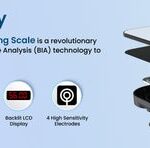For many car enthusiasts and hobbyists, a police scanner is an invaluable tool, offering a real-time glimpse into public safety communications. However, the presence of a car scanner can sometimes raise eyebrows during police encounters. This article delves into the complexities of “Car Scanner Police” interactions, drawing from real-world scenarios to provide a clearer understanding of your rights and how to navigate these situations.
The Initial Concern: Furtive Movements and Officer Safety
Imagine being pulled over for a routine traffic stop. Reaching under your seat might be a natural instinct – perhaps you’re adjusting your scanner or retrieving a document. However, from a law enforcement perspective, such actions can be interpreted as “furtive movements.” As highlighted in a firsthand account from a police officer, any sudden or unexplained movement, like reaching under the seat, can heighten an officer’s suspicion and trigger a safety protocol.
During a traffic stop, officer safety is paramount. Unpredictable movements can lead to a situation escalating quickly. An officer might perceive reaching under the seat as an attempt to access a weapon. This could lead to you being asked to step out of the vehicle, a pat-down for weapons, and a closer inspection of the area within reach, including where a scanner might be located. In high-stress situations, these actions could even occur at gunpoint, depending on the officer’s assessment of the perceived threat. If a scanner is discovered during such a search, it naturally raises questions about the occupant’s intentions, especially if other circumstances seem suspicious.
Legal Aspects of Car Scanners: Texas and Beyond
The legality of owning and operating a car scanner varies depending on location. It’s crucial to understand the specific laws in your state or region. Referring to the Texas Penal Code, as mentioned in the original discussion, there are exemptions that permit listening to scanners. Generally, federal law allows for the reception of publicly accessible radio communications. However, laws can differ significantly at the state and local levels, and may pertain to specific contexts, such as using scanners to aid in the commission of a crime.
It’s important to note that while simply possessing a scanner in your car is often legal, how you use it and how you behave during a police stop can influence an officer’s perception. For instance, while listening to a scanner while driving is generally permissible, actively using it to interfere with law enforcement operations is not. This distinction is critical in “car scanner police” interactions.
An Officer’s Perspective: The Pursuit Incident
To illustrate a real-world “car scanner police” scenario, consider the experience of a law enforcement officer who encountered an individual following a police pursuit. This situation highlights how a scanner’s presence can become a point of interest when coupled with other suspicious behavior.
In this instance, a plainclothes narcotics officer requested assistance in stopping a vehicle suspected of following a police pursuit. The concern was that the occupants might be attempting to assist a fleeing suspect. Subsequently, a patrol officer located a car matching the description near the pursuit area.
The Stop and the Scanner Discovery
Upon initiating a traffic stop at a convenience store, the officer made contact with the driver, who initially denied following the pursuit. However, with consent to search the vehicle, the officer proceeded to investigate. While searching, a scanner was found tucked between the seats. The officer, acknowledging that scanner possession is typically not an issue, became suspicious due to the driver’s initial dishonesty and the context of following a police pursuit.
Confrontation and Resolution
Confronted with the scanner and the officer’s questioning, the driver eventually admitted to following the pursuit. The officer, considering the potential charge of “interfering with public duties,” used this as leverage to emphasize the seriousness of the situation. While the officer could have pursued charges, the focus shifted to resolving the immediate concern. The officer instructed the driver to “do something with the scanner” before leaving, implying it should be stored out of sight, like in the trunk. Instead, the driver, in a perhaps unexpected move, discarded the scanner in a nearby trash can.
This anecdote underscores that while owning a car scanner is often legal, context and behavior significantly shape police interactions. In this case, the scanner, combined with the act of following a pursuit and initial deception, created a situation where the scanner became a focal point.
Conclusion
Navigating “car scanner police” encounters effectively involves understanding both your rights and law enforcement perspectives. While car scanners themselves are generally legal to possess, being aware of how your actions might be perceived during a traffic stop is crucial. Avoid furtive movements, be honest and cooperative, and ensure you are familiar with local laws regarding scanner use. By being informed and respectful, you can minimize misunderstandings and ensure smoother interactions when “car scanner police” come into play.

